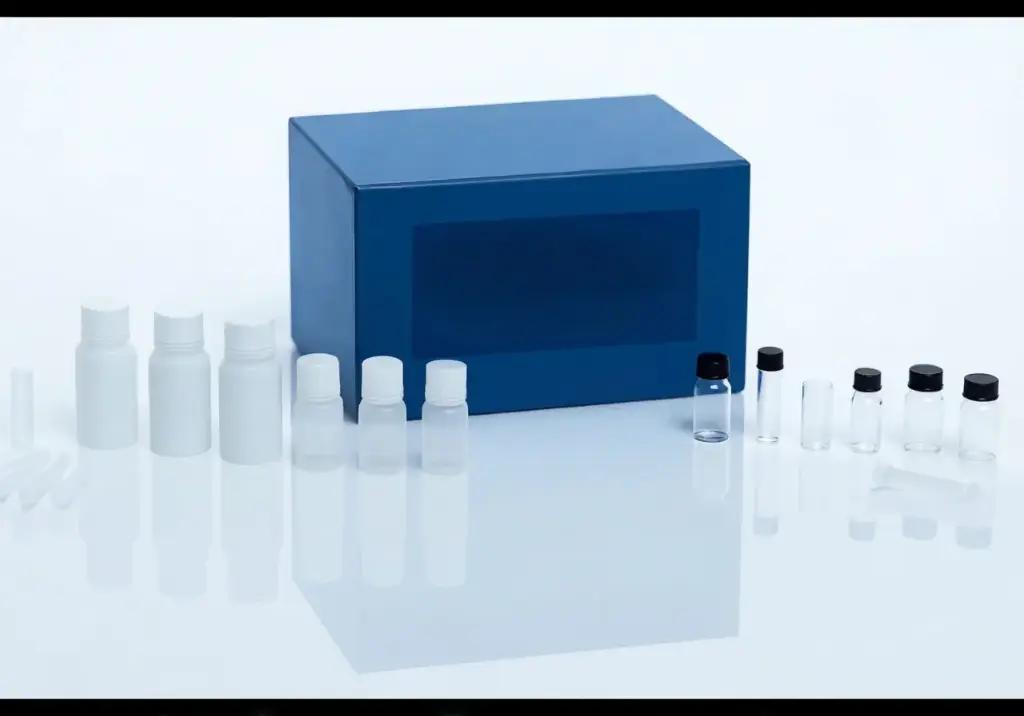RNAiMAX Transfection Reagent – High-Efficiency siRNA & miRNA Delivery
RNAiMAX Transfection Reagent is a gold-standard solution for the efficient and reproducible delivery of siRNA and miRNA into a wide range of cell types. Engineered for superior transfection performance with minimal cytotoxicity, RNAiMAX is trusted in gene silencing and RNA interference (RNAi) experiments worldwide.
Its unique lipid formulation enables high knockdown efficiency while preserving cell viability, making it ideal for both routine and sensitive applications.
✅ Key Features
- High-efficiency siRNA and miRNA delivery in numerous cell lines
- Minimal cytotoxicity and superior cell viability
- Optimized for RNAi applications including gene knockdown
- Scalable for high-throughput screening and functional genomics
- Reproducible, consistent results across experiments
📦 Kit Contents
- RNAiMAX Transfection Reagent (various vial sizes)
- Detailed user protocol
🔬 Applications
- Gene silencing using siRNA or miRNA
- Functional genomics and target validation
- Pathway analysis in molecular biology research
- High-throughput RNAi screening
- RNA interference in difficult-to-transfect cell types
❓ FAQ
1. What type of nucleic acids can RNAiMAX deliver?
👉 It is specifically optimized for siRNA and miRNA molecules.
2. Is it compatible with primary cells?
👉 Yes, RNAiMAX demonstrates high transfection efficiency in a wide variety of primary cells and cell lines.
how to purify plasmid dna
A Step-by-Step Guide
Purification of plasmid DNA is an essential technique in molecular biology, widely used for cloning, gene expression, sequencing, and transfection. Obtaining clean, high-quality plasmid DNA ensures reliable downstream results in both research and biotechnology applications.
In this article, we will cover the principles, methods, and workflow of plasmid DNA purification, along with tips to improve yield and purity.

how to purify plasmid dna
What Is Plasmid DNA Purification?
Plasmid DNA purification is the process of isolating plasmid DNA from bacterial cells while removing proteins, RNA, lipids, and genomic DNA. Since bacteria produce both chromosomal DNA and plasmid DNA, selective methods are required to enrich plasmids.
Common Methods of Plasmid DNA Purification
- Alkaline Lysis Method
- The most widely used technique.
- Involves lysing bacterial cells under alkaline conditions to denature chromosomal DNA and proteins, while plasmid DNA remains intact.
- Requires neutralization, precipitation, and recovery steps.
- Silica Column-Based Purification
- DNA binds to a silica membrane in the presence of chaotropic salts.
- Impurities are washed away, and plasmid DNA is eluted in buffer or water.
- Provides fast, high-purity results, ideal for cloning or sequencing.
- Magnetic Bead-Based Purification
- Uses paramagnetic beads coated with DNA-binding chemistry.
- Easy to automate and scale.
- Useful for high-throughput labs.
- Cesium Chloride Gradient Centrifugation (Classical Method)
- Ultra-pure plasmid DNA isolation.
- Time-consuming and requires specialized equipment.
- Often replaced by modern column and bead-based methods.
- how to purify plasmid dna
how to purify plasmid dna
Step-by-Step Workflow (Typical Column Purification)
- Grow Bacterial Culture
- Inoculate a single colony into LB medium with the appropriate antibiotic.
- Incubate overnight at 37 °C with shaking.
- Harvest Cells
- Pellet bacteria by centrifugation.
- Cell Lysis
- Resuspend pellet in buffer.
- Add alkaline lysis solution (NaOH + SDS).
- Neutralize with potassium acetate to precipitate genomic DNA and proteins.
- Clear the Lysate
- Centrifuge to remove debris.
- Collect supernatant containing plasmid DNA.
- Bind DNA to Column
- Load lysate onto a silica column.
- DNA binds to the membrane.
- Wash Steps
- Wash with ethanol-based buffers to remove salts and contaminants.
- Elution
- Elute purified plasmid DNA with nuclease-free water or TE buffer.
Quality Control of Purified Plasmid DNA
- Concentration Measurement: Use spectrophotometry (A260/A280 ratio).
- Integrity Check: Run an agarose gel to confirm size and purity.
- Functional Test: Use DNA in downstream applications such as PCR, cloning, or transfection.
Tips for High Yield and Purity
- Use fresh bacterial cultures for maximum plasmid copy number.
- Choose the right plasmid copy type (high-copy plasmids give more yield).
- Avoid overloading columns or beads, which can reduce purity.
- For transfection-grade DNA, use endotoxin-free kits.
Conclusion
Plasmid DNA purification is a cornerstone of modern molecular biology. By selecting the right method and following best practices, researchers can obtain high-quality DNA for cloning, sequencing, transfection, or synthetic biology applications.
Whether using classical alkaline lysis, silica columns, or advanced magnetic bead systems, the key is to balance yield, purity, and convenience based on the experiment’s needs.
